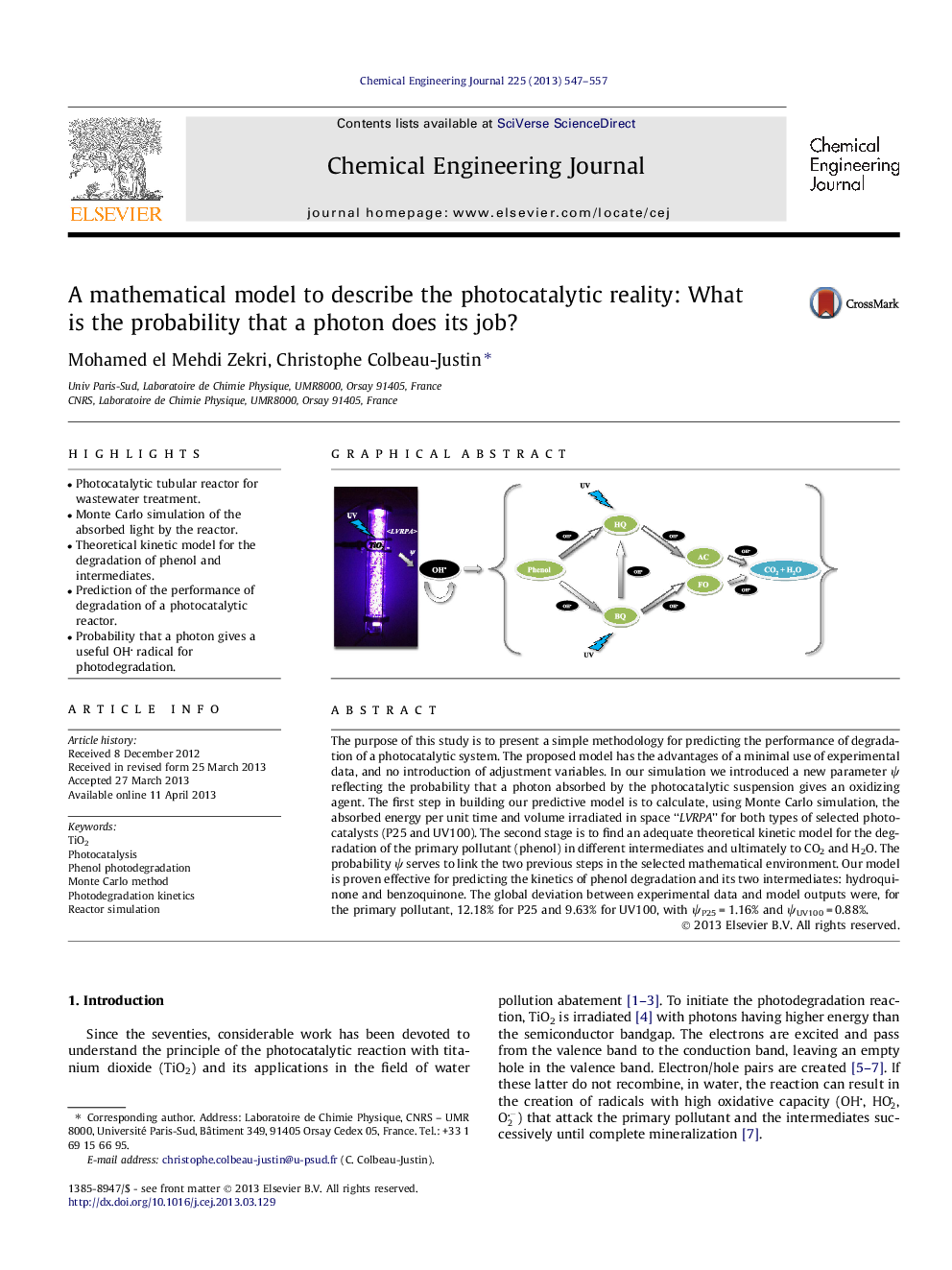| Article ID | Journal | Published Year | Pages | File Type |
|---|---|---|---|---|
| 148704 | Chemical Engineering Journal | 2013 | 11 Pages |
•Photocatalytic tubular reactor for wastewater treatment.•Monte Carlo simulation of the absorbed light by the reactor.•Theoretical kinetic model for the degradation of phenol and intermediates.•Prediction of the performance of degradation of a photocatalytic reactor.•Probability that a photon gives a useful OH radical for photodegradation.
The purpose of this study is to present a simple methodology for predicting the performance of degradation of a photocatalytic system. The proposed model has the advantages of a minimal use of experimental data, and no introduction of adjustment variables. In our simulation we introduced a new parameter ψ reflecting the probability that a photon absorbed by the photocatalytic suspension gives an oxidizing agent. The first step in building our predictive model is to calculate, using Monte Carlo simulation, the absorbed energy per unit time and volume irradiated in space “LVRPA” for both types of selected photocatalysts (P25 and UV100). The second stage is to find an adequate theoretical kinetic model for the degradation of the primary pollutant (phenol) in different intermediates and ultimately to CO2 and H2O. The probability ψ serves to link the two previous steps in the selected mathematical environment. Our model is proven effective for predicting the kinetics of phenol degradation and its two intermediates: hydroquinone and benzoquinone. The global deviation between experimental data and model outputs were, for the primary pollutant, 12.18% for P25 and 9.63% for UV100, with ψP25 = 1.16% and ψUV100 = 0.88%.
Graphical abstractFigure optionsDownload full-size imageDownload as PowerPoint slide
